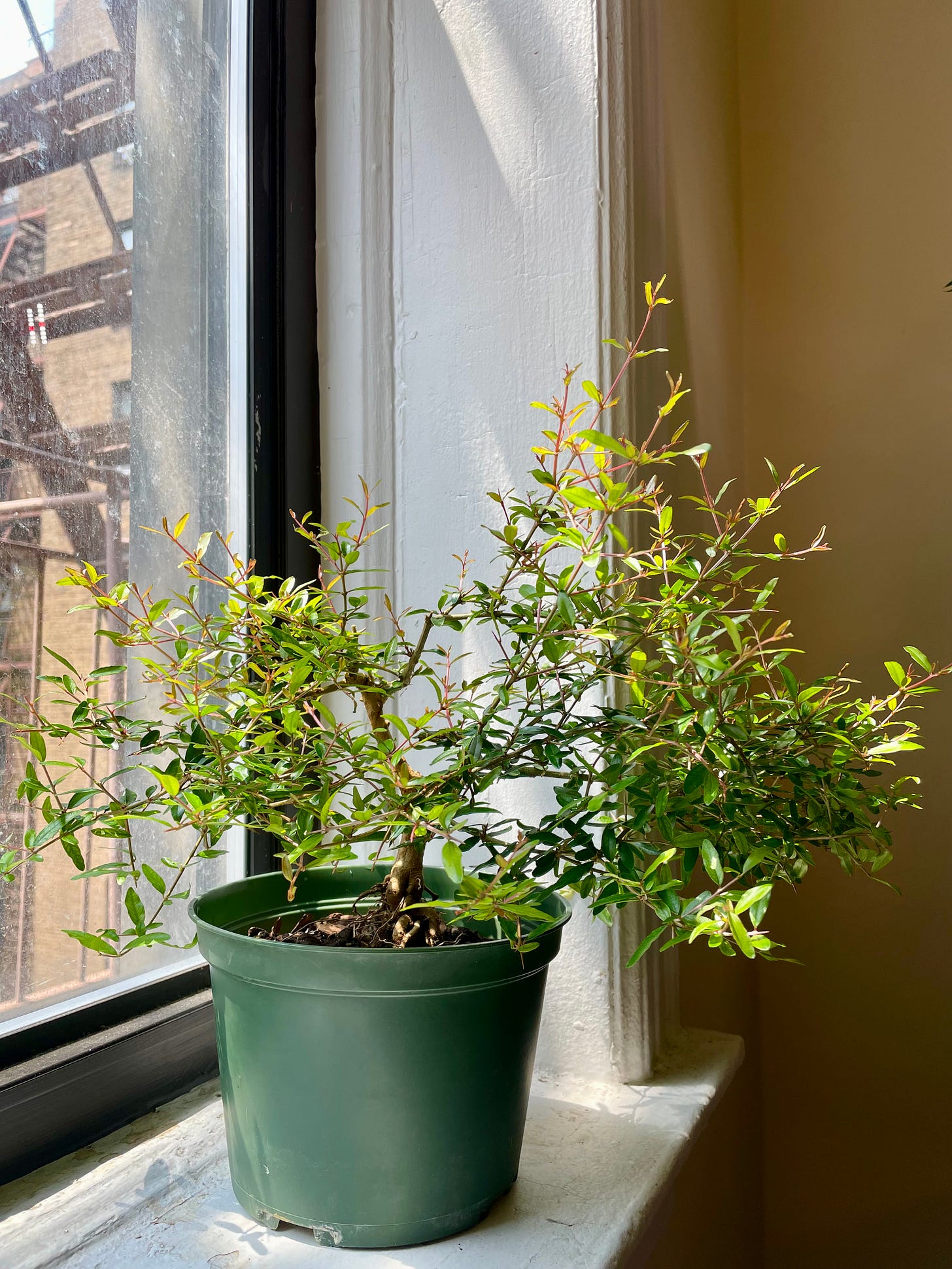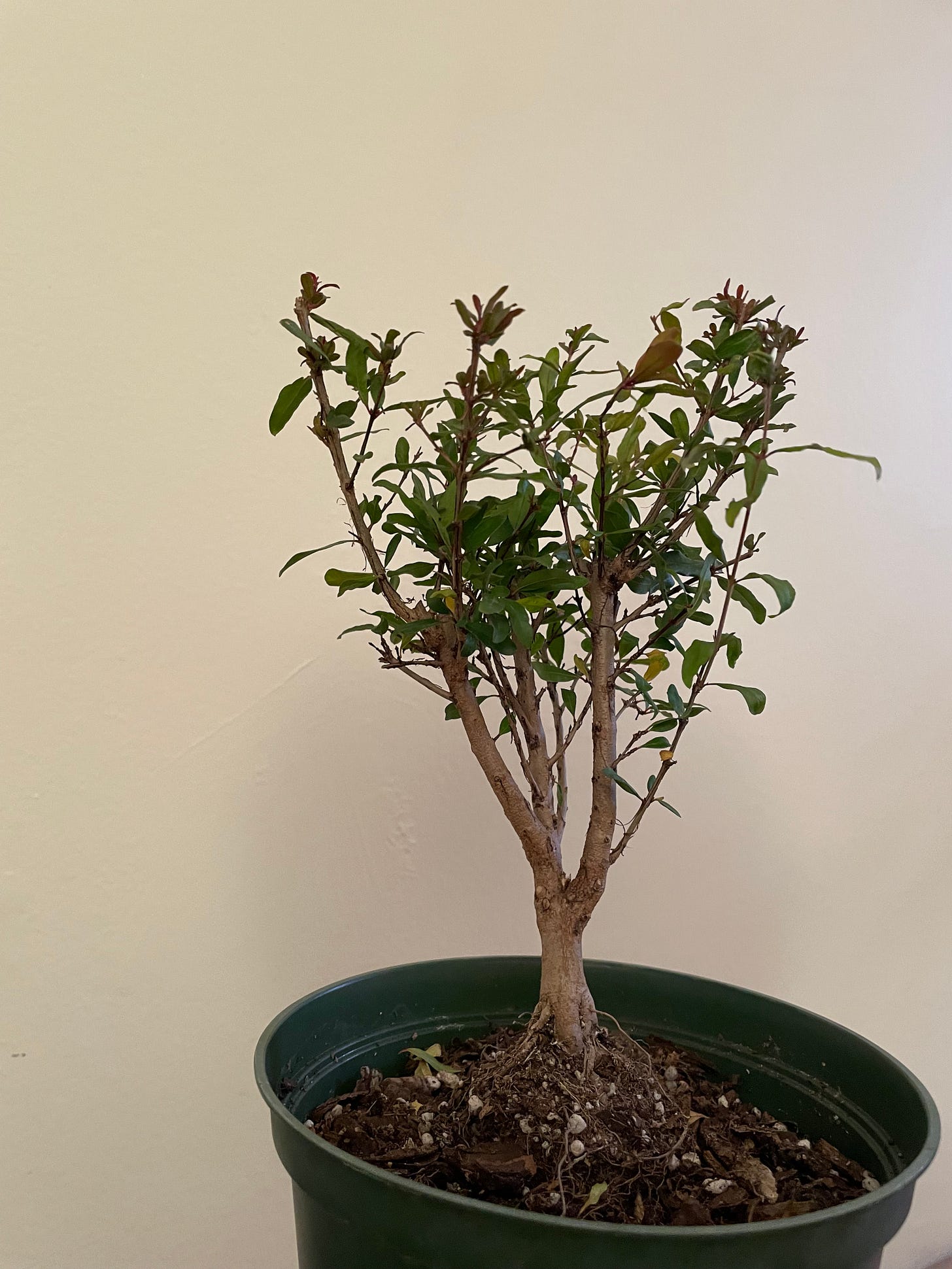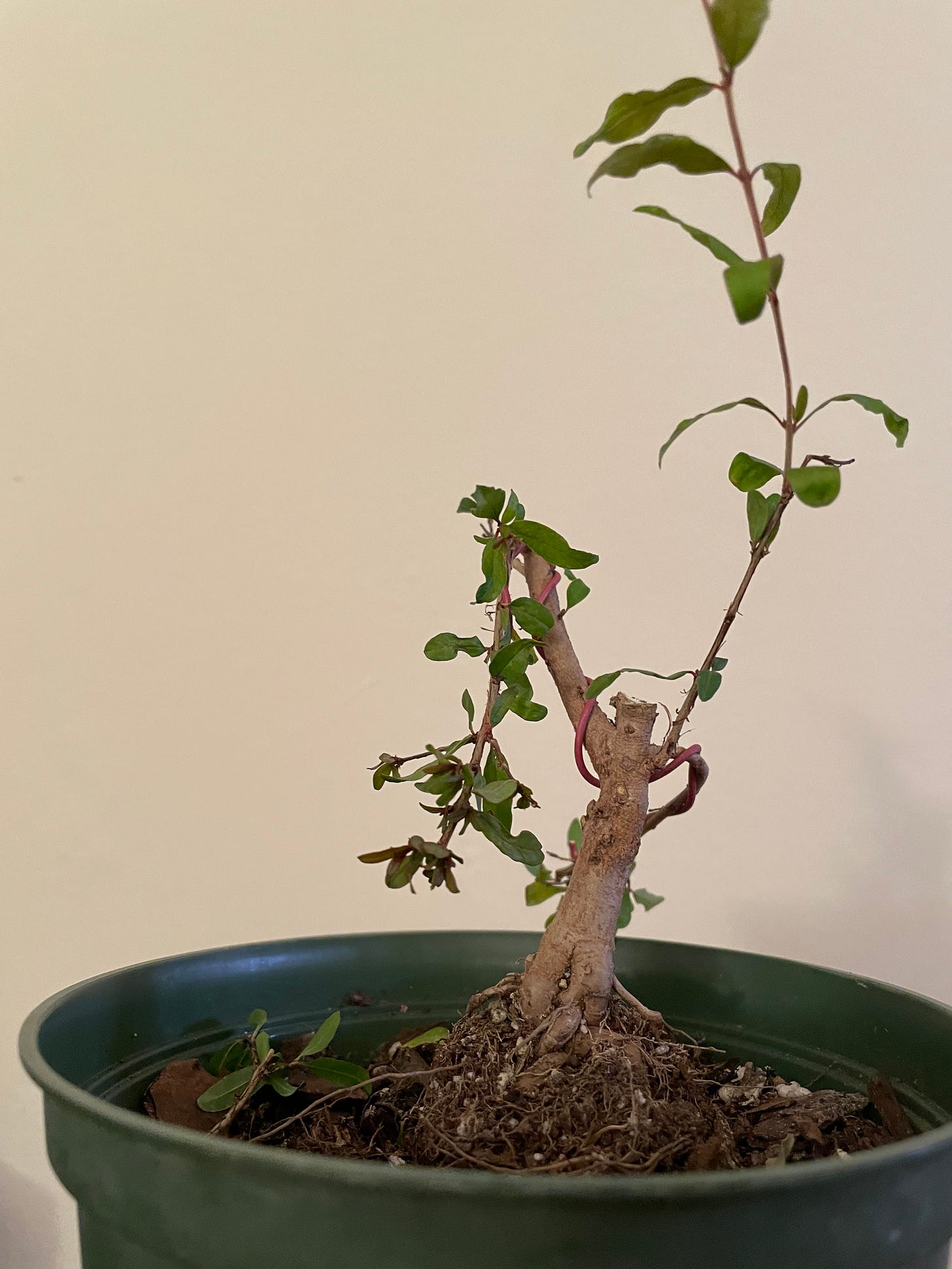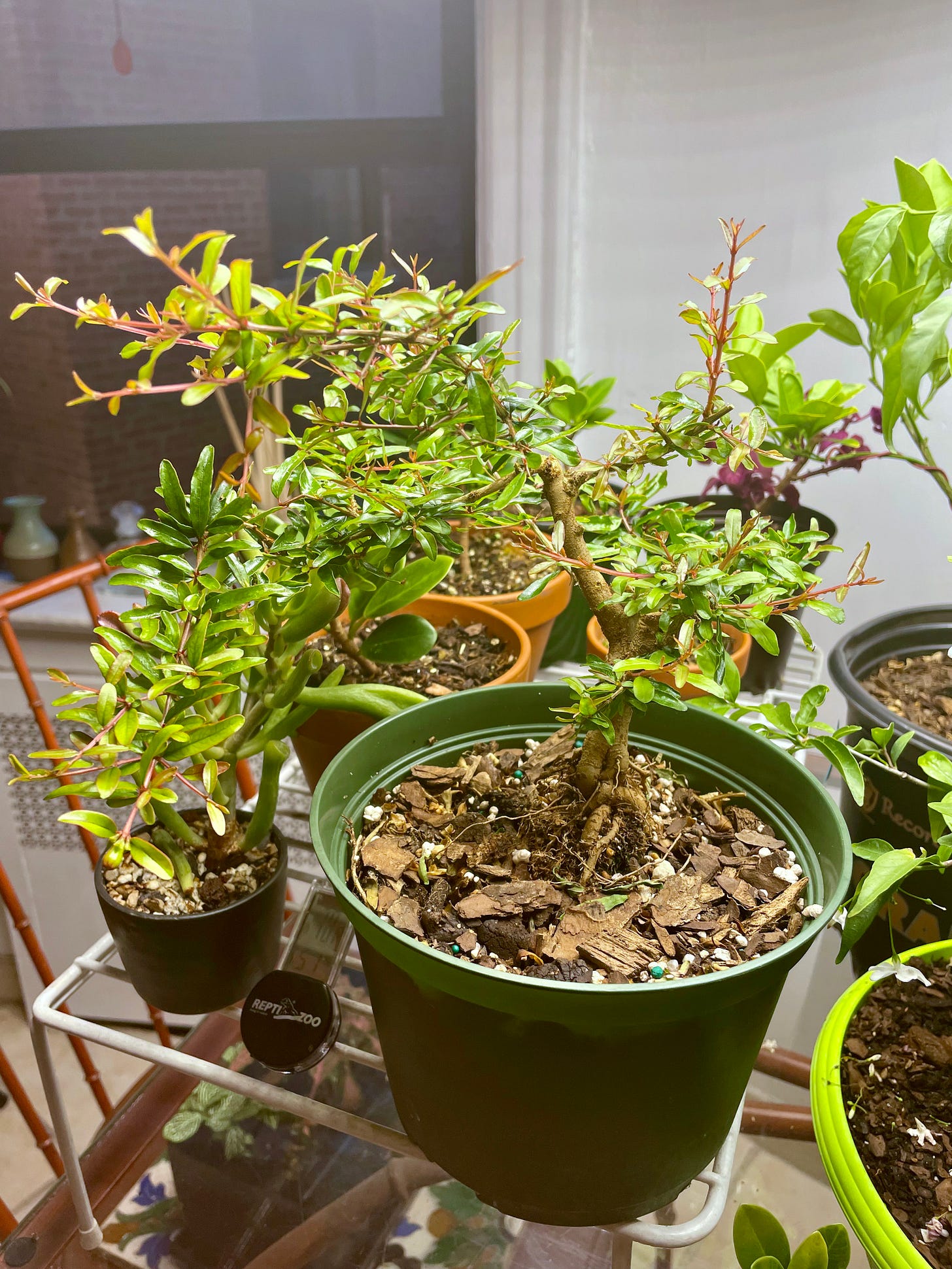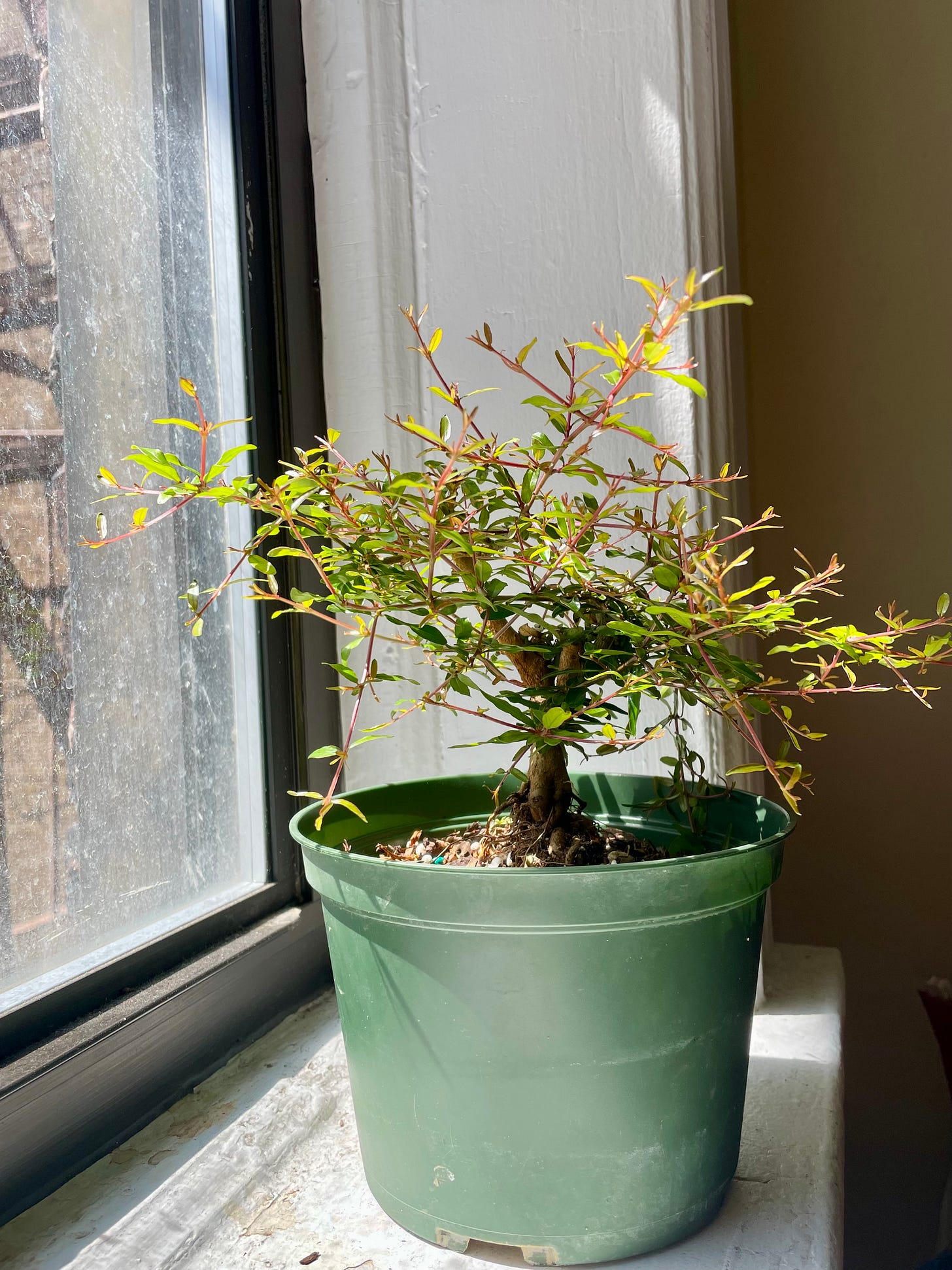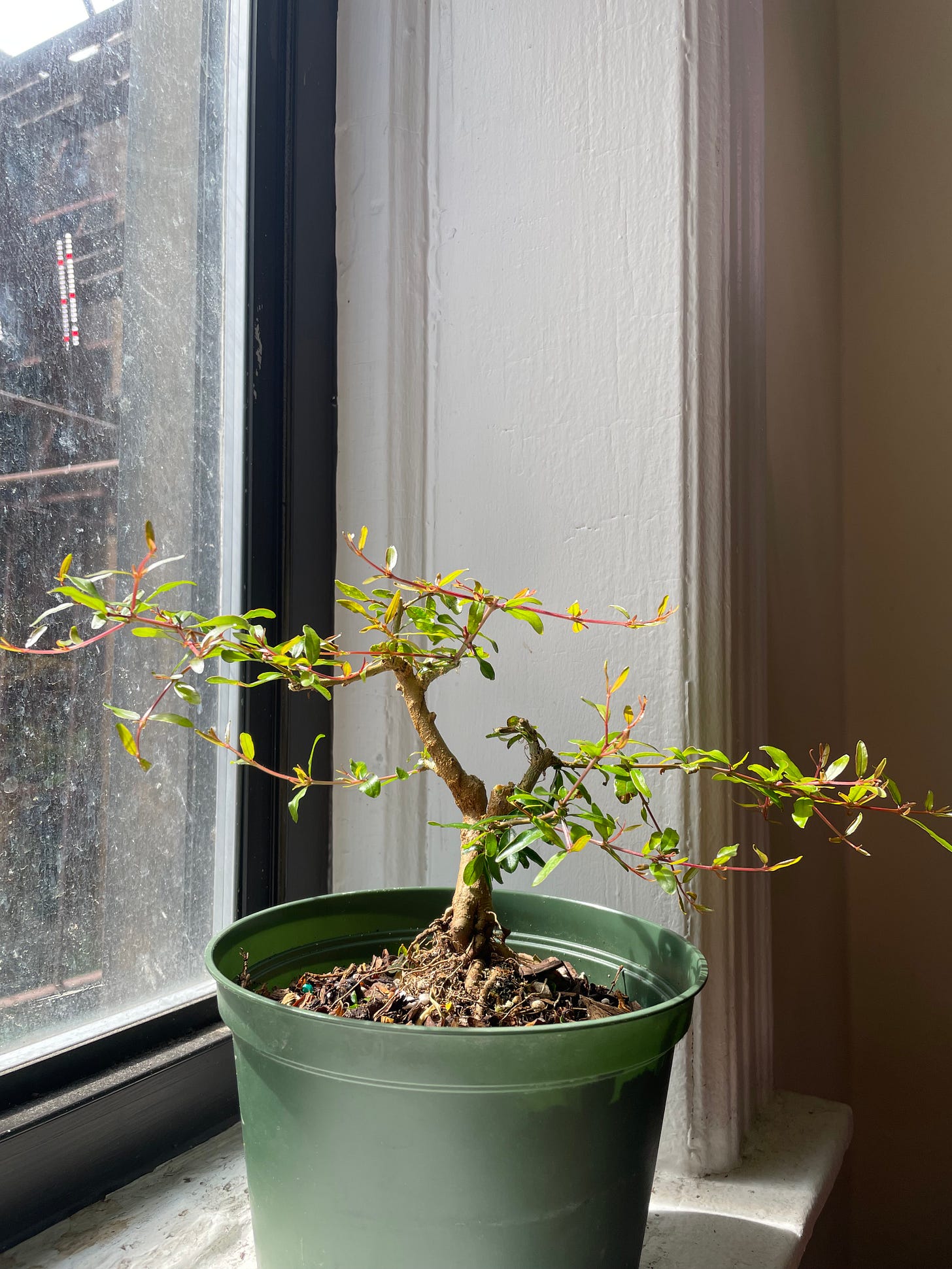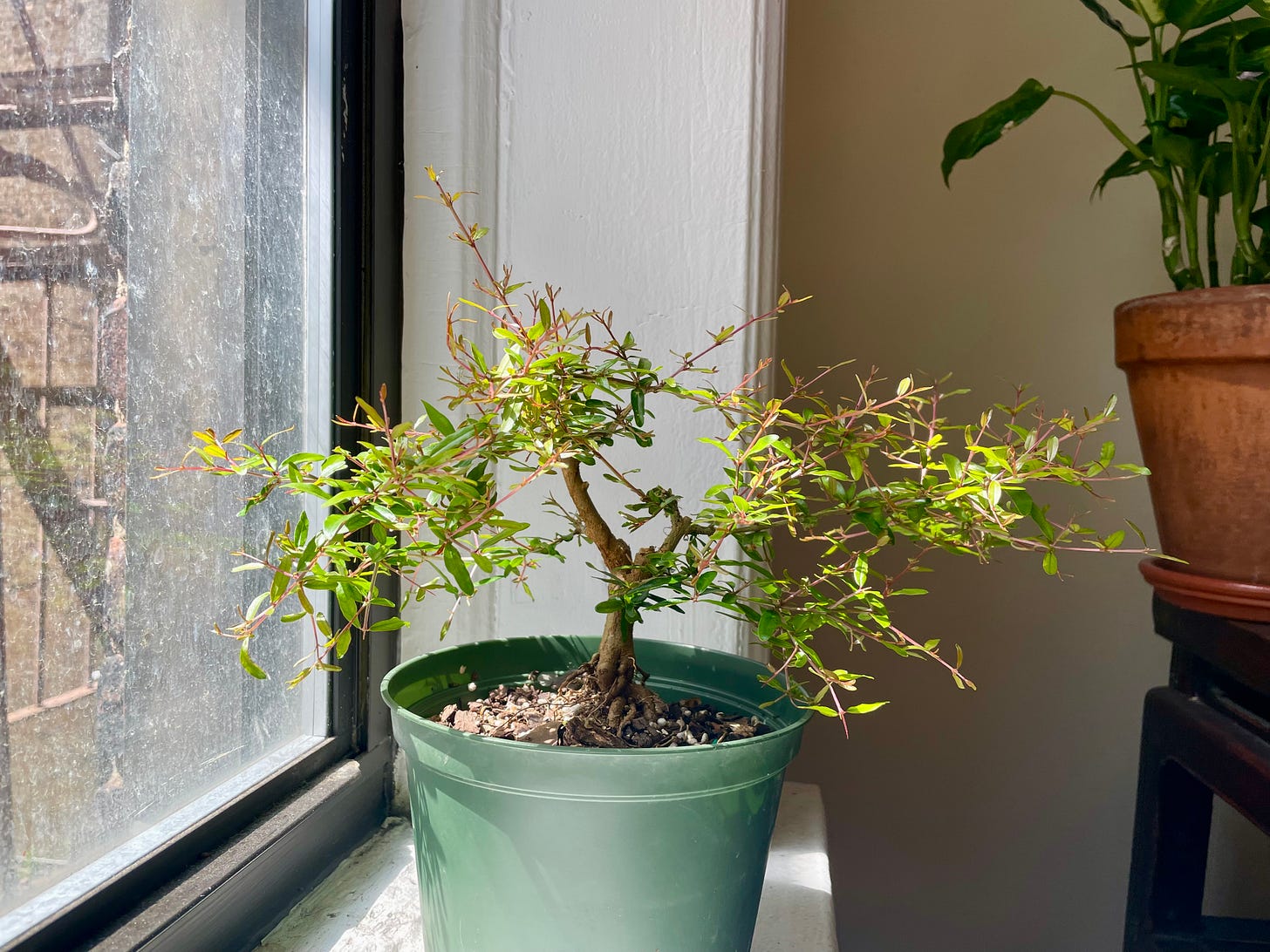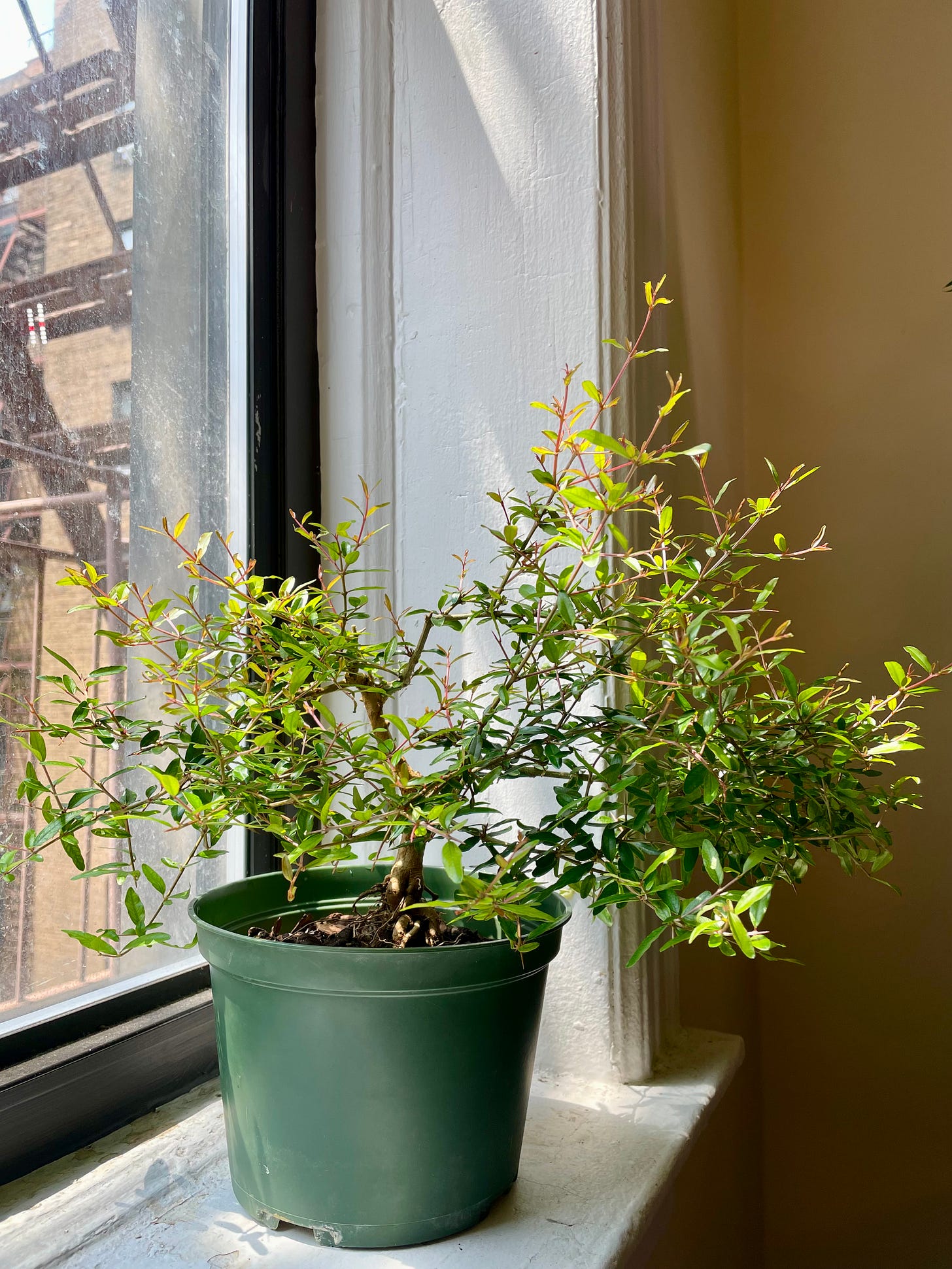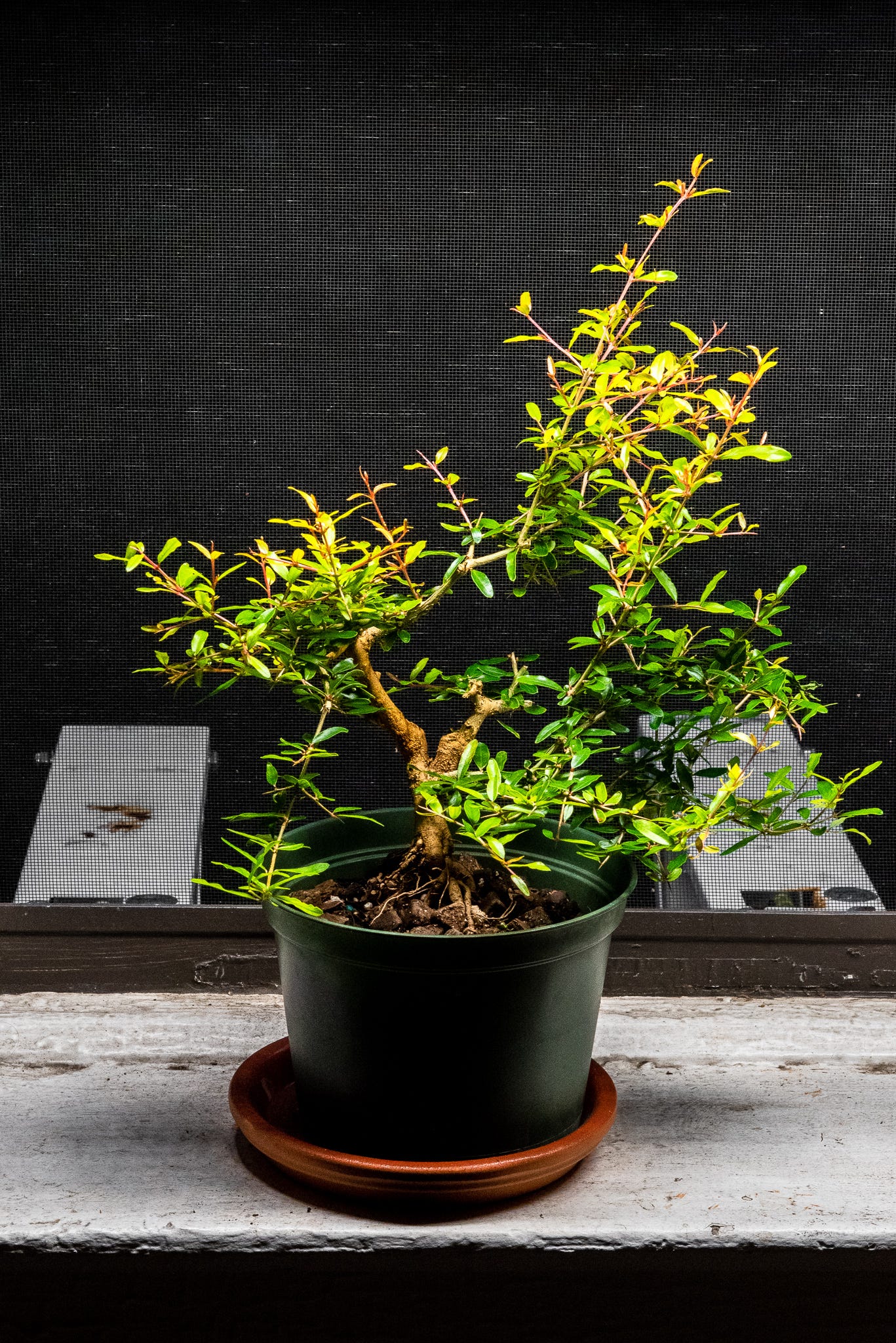The indomitable pomegranate
A five month progression with more re-style attempts than I remember.
My practice pomegranates have been fruitful. 14 hours a day of high intensity grow lights have fattened them up quick. Since styling them back in February, I’ve had to cut the trees back five or six times. It’s a wild thing, to watch new wood appear out of thin air.
That’s how photosynthesis works, you know? A plant harnesses the light of the sun and water pumped from its roots to rip the carbon from a molecule of atmospheric CO2. The carbon combines with water to make sugar. In this way the tree makes its own food. The carbon in that food becomes new wood. Creation out of nothing. Sometimes I look at a branch and wonder how much carbon dioxide it took to make it. I’m sure there’s a biochemical formula to determine such a figure; I don’t want to know anything about it if so.
I realize I’m rambling. What I want to get across is an appreciation for the self-sufficiency of plants. Yes, like us, they benefit from relationships with each other and all kinds of fleshy microorganisms. But you can’t grow a puppy in a sidewalk crack, the way trees do for themselves. In an elemental way, you can trust a tree to handle its own shit. It’s happy to help with whatever you need but it would be even happier if you left it alone.
Here’s one of my practice pomegranates in its raw state.
And here’s that first styling in February. Back then, I wrote:
I’m envisioning a bent and broken literati design with this one downward-pointing branch acting as the new trunk for a larger tree that lost its crown. Eventually I want to create two or three levels of foliage with the end of the branch reaching toward the viewer. The backward pointing branch will get removed and the tall one pointing skyward will get cut back hard once the tree recovers.
None of this came to pass.
I shared my photos and design plan with reddit’s bonsai community and was politely encouraged to consider other options. The tree bounced back easier than I did.
May 12th. I removed the wire some weeks earlier. At this point I moved on to an overhanging street tree approach. Sort of. Pomegranates don’t act this way in orchards and they aren’t planted as street trees in cities. The whole thing was a hurt, wound-licking response to criticism that I knew was right. An easy pivot lacking depth or sense.
May 28th. Free growth has made this tangle of branches. A tree makes more than it needs to account for gusts of wind and bark-boring beetles that naturally whittle those branches down. A tree isn’t just self-sufficient—it plans ahead.
I intervened on nature’s behalf. Not with any clear plan, still. I had a vague idea about an ultra-wide, squat specimen with expansive airy branch pads. A gleaming Miami Cadillac of a tree. Many Brazilian rain tree bonsai are styled this way, reflecting their natural growth habit outdoors.
This was also a terrible idea. Brazilian rain trees are native to South American rainforests. Pomegranates come from sun-drenched stretches of Iran. The leaves wouldn’t hang right and the winter profile would look unnatural.
I abandoned the approach quickly.
June 9th. The trunk is noticeably thicker. Wire scars have begun to recede. Starting to get some definition in the main branch pads.
A light trim to thin out branches and promote airflow. I’m especially nervous about airflow for these indoor trees. Wind makes a tree resilient. This one, protected from the elements, is too shy to set foot on the playground.
July 1st. A zigzagging upward branch has become the next section of the pomegranate’s trunk. I like that this new apex starts below the branch pad to the left. To me it reflects the tortured, directionless life of an orchard tree in the hands of a drunk and reckless gardener, which is more or less the truth.
I’ve been excavating the knuckle of roots at the base of the tree. It’s gnarly and tied up in itself. I’m actually worried the roots might girdle each other. Next spring I’ll repot this tree and attempt to untangle the roots. Once freed, they might be good candidates for tying around a rock or splaying out for a creeping nebari. We’ll see.
July 7th. Better defined branch pads. The triangular silhouette of a conventional bonsai design begins to emerge.
The bushy branches are still growing out until they’ve thickened enough to add weight to the design. Then I’ll cut them back hard. I am finally starting to like what I see.
I had radical plans for this tree. None of them worked. The pomegranate patiently guided me to a better path.
Tree reading
A story I wrote last year about sustainability in the spirits industry is up for a Tales of the Cocktail award. Perhaps you’d like to read it? [Imbibe]
I support Gustavo Arellano’s grudge against the jacaranda. [Los Angeles Times]



